Jump to:
Thinking about lightening up your color with a little balayage or all-over? Smudged roots will make all the difference in how natural and luxe your results look.
Learn about root smudging and how it helps blend and transition darker natural shades into beautiful highlights, balayage, and all-over blonde looks in our guide! We’ll explore smudged roots from every angle – what this technique is, how it’s done, and what it’s for.
You’ll get to see tons of pretty examples of root-smudged color and snag a few tips along the way. See how smudged roots are the key to nailing a lighter shade with that natural, lived-in look below!
What Are Smudged Roots?
- Root color 1-2 shades lighter than natural is applied to top 1”
- Transition color “smudges” the line between dark and light
- Gives balayage, highlights, and lightened hair a lived-in, natural look
Smudged roots – sometimes called a root smudge – uses color one or two shades lighter than your natural color to blend and soften the transition zone between your roots and highlighted or all-over lightened strands.
Its purpose is to soften that line between dark and light. Root smudging is an extra step done after you’ve bleached, highlighted, or applied an all-over dye that’s lighter than your natural color.
The color (lighter than your natural, but darker than your new color) is softly tapped into the top 1” of your roots. The tapping technique works just like a blending sponge used to apply and blend foundation.
If you’re going lighter with your color, you know that it doesn’t take long for your natural color to begin peeking out at the roots. Once your roots start growing out, your new light color harshly contrasts with your darker natural color and requires regular touch-ups to remedy the issue.
But with a root smudge, you get this beautiful “in-between” root shade that seamlessly marries your root color and the new, lighter color to avoid the harsh line.
The root smudge color is applied to the top 1” or so to create a nice shadow effect that adds dimension and depth. As time goes on and your natural color begins to show at the root, the root smudge really begins paying off.
You’ll have a natural-looking color gradient at root instead of a harsh line between dark and light. Not only does that prolong your time between touch-ups, but it also creates a beautifully natural, lived-in look for your new, lighter color.
Let’s look at some of the ways a root smudge is different from 2 other common color camouflage techniques: Root melts and shadow roots.
Smudged Roots vs. Root Melt
Root smudge and root melt are often used interchangeably, but they’re slightly different. Smudged roots offer a lighter and smaller area of transitional color to keep you as light overall as possible.
The root color will be 1-2 shades lighter than your natural color and doesn’t delve as deeply into the midshaft as a root melt. With a root melt, slightly darker, richer tones are used to blur out the line of demarcation and blend your natural color into the new, lighter tone.
Root melts typically use color that is either the same color as your natural roots or slightly darker. Root melts extend further into the hair, closer to the midshaft. This creates a very rooty blonde that doesn’t look as light overall.
Smudged Roots vs. Shadow Root
It’s easy to confuse a root smudge with a shadow root, but there are some key differences here. Smudged roots use a transition color that’s darker than your new, lighter tone but 1-2 shades lighter than your natural color.
As the hair grows out, this creates a nice color gradient that looks natural. A shadow root has a more dramatic color contrast than a root smudge. The color may be the same level and shade as your natural color or slightly deeper.
With a shadow root, the color is usually brought down further into the hair for a more obvious (but still well-blended) contrast. The result is a less lightened look overall than a root smudge offers.
You Might Also Like:
Root Smudge Benefits
There are several benefits to adding a root smudge to your color service when you’re going lighter. Let’s take a look at some of the reasons smudged roots are a must for brunettes and raven-haired ladies!
Reduces Maintenance
A root smudge is a no-fail way to reduce the level of maintenance going lighter usually requires. Typically, you’ll need to get root touch-ups every 6-8 weeks as your hair grows out and the dark roots starkly contrast with your lighter blonde, brown, or red color.
But with a smudged root, you buy a little more time in between touch-ups and may be able to go another full month – about 12 weeks – before needing a touch-up. That’s because the transitional root color creates a blended effect that softens the contrast between your dark roots and your lighter color or highlight!
Softens Color Transition Lines
This is one of the benefits that will be apparent from the start with smudged roots! A root smudge really softens up and blends out the line of transition between your darker natural color and the new, lighter tone.
Instead of harsh lines of demarcation that show where your balayage, ombre, highlight, or all-over color begins, root smudging acts like a blending tool to make those lines blur. This is a great technique to pair with balayage for the cleanest-looking, blended color transition at the roots.
Gives Color a More Natural Look
Root smudging always gives light color a more natural look. Instead of brilliant blonde, light brown, or vibrant red from root to tip, you get a natural graduation of color. This is especially helpful on darker-haired individuals who feel that all-over light color looks a little “off.”
With a smudged root, you get the benefit of a more natural color gradient that starts off slightly lighter than your natural tone and lightens seamlessly about an inch off the root. This is especially helpful once you begin to see darker root growth!
Adds Dimension and Depth to Color
A smudged root will add gorgeous dimension and depth to your new color, no matter what the shade or tone is. One reason lighter tones may look a little odd on naturally dark-haired women is due to the lack of natural shading, dimension, and depth.
By working in a color that’s slightly lighter than your root tone but a little darker than your new color, you create a pretty “shadow” zone at the root that doesn’t look as harsh or unnatural as a lighter color from root to tip.
Works With Blonde, Light Brown, and Red Shades
Root smudging is most often used with blonde, but it’s a fabulous option for dark-haired women going blonde, light brown, or red with their color. And it works well with all-over color, foil highlights, gradient ombre, and balayage!
Use a smudged root to blend blond, brown, or red shades – any shade that’s lighter than your natural color – and make maintenance so much simpler.
10 Beautifully Smudged Roots With a Lived-In Look
Want to see how a smudged root can blend and soften a lighter hair color? Check out these perfectly smudged examples that camouflage root growth and work with, not against, your natural color to add tons of dimension and depth!
1. Platinum With Dark Blonde Smudged Root
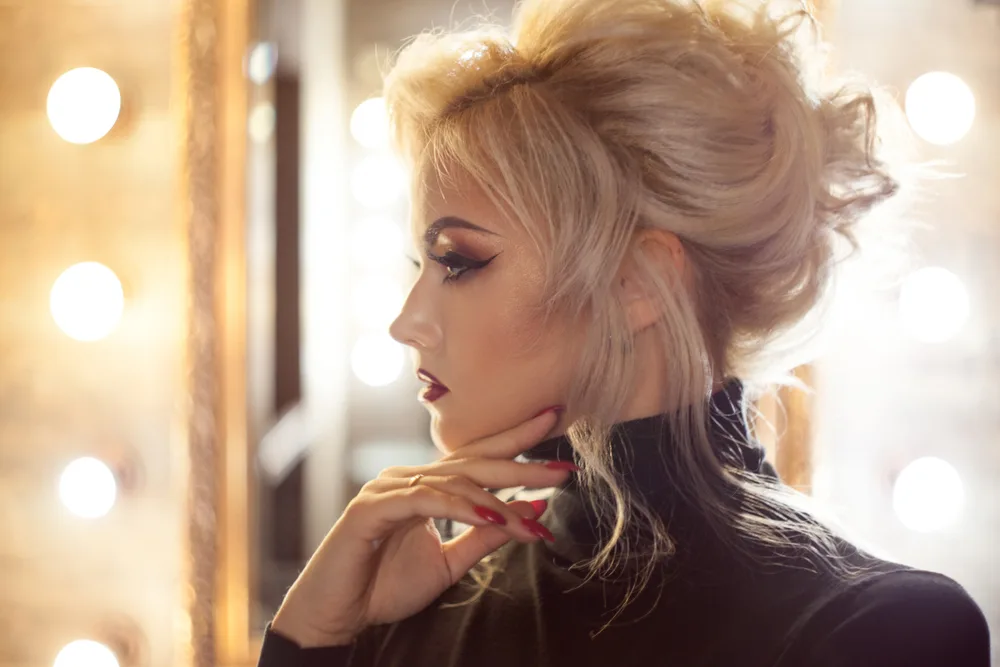
Lia Koltyrina/Shutterstock
Smudged roots work well for women with a lighter natural color, too! If you’re a natural dirty blonde or light brown, you can use an in-between shade (like this dark beige blonde) to seamlessly blend out your roots without encroaching into your shimmering, light platinum tone.
2. Honey Golden Blonde With Chocolate Brown Root Smudge

Blackday/Shutterstock
Rich, warm golden tones in this honey blonde balayage are the star of the show, but a chocolate brown root smudge blends and softens the color transition.
With a medium chocolate brown extending a little more than an inch off the root, you can camouflage and blend a dark brown natural root into a much-lighter color like honey blonde perfectly.
3. Dimensional Blonde Balayage With Warm Chestnut Root Smudge
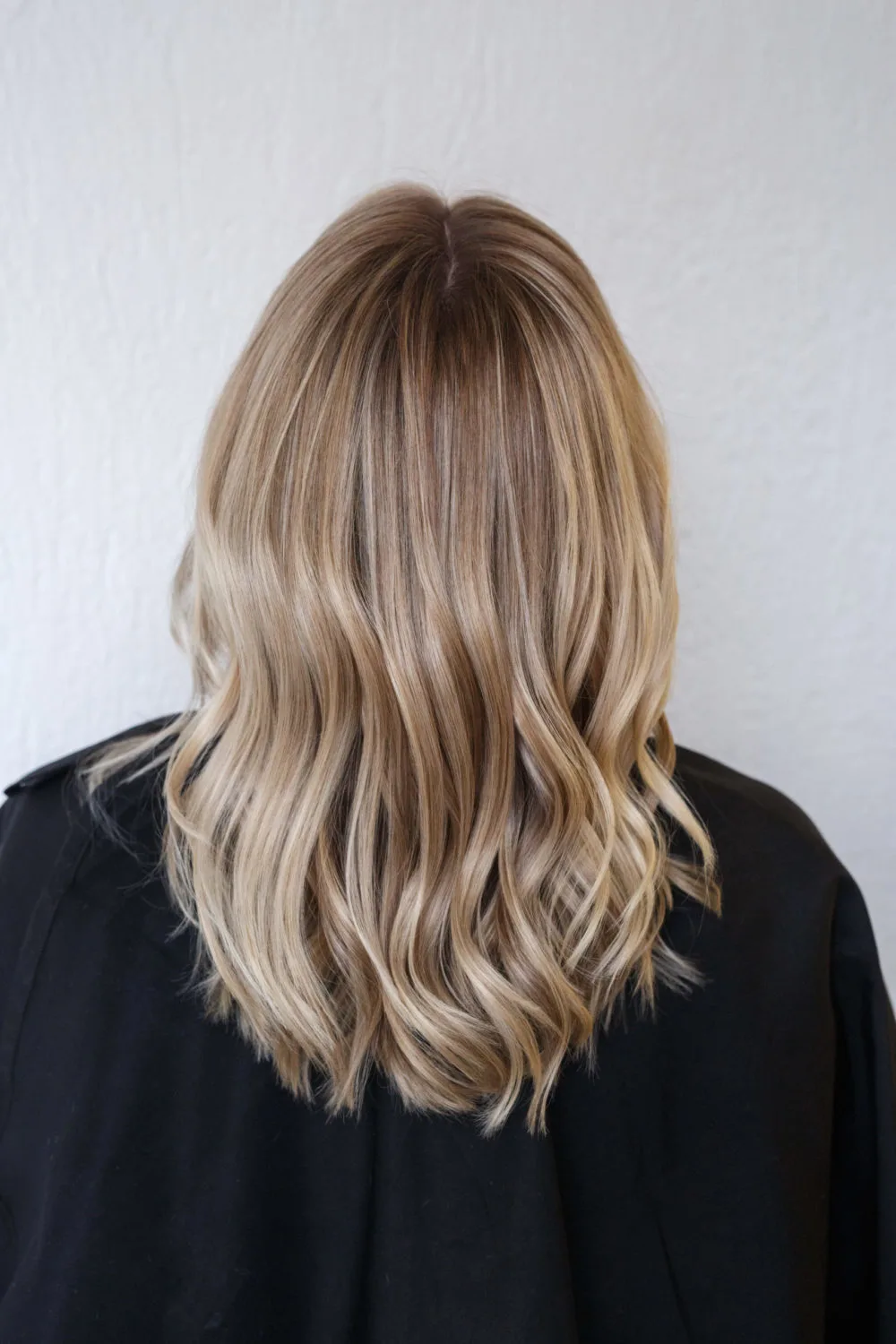
Shumskaya Tatiana/Shutterstock
If you’re using warm blonde tones in your balayage – shades with golden or reddish undertones like honey, caramel, or strawberry blonde – you’ll love the way a chestnut brown smudged root looks.
A light chestnut brown as shown is perfect for smudging out medium brown or auburn roots seamlessly into lighter blonde balayage tones.
4. Gradient Platinum With Light Ash Root Smudge
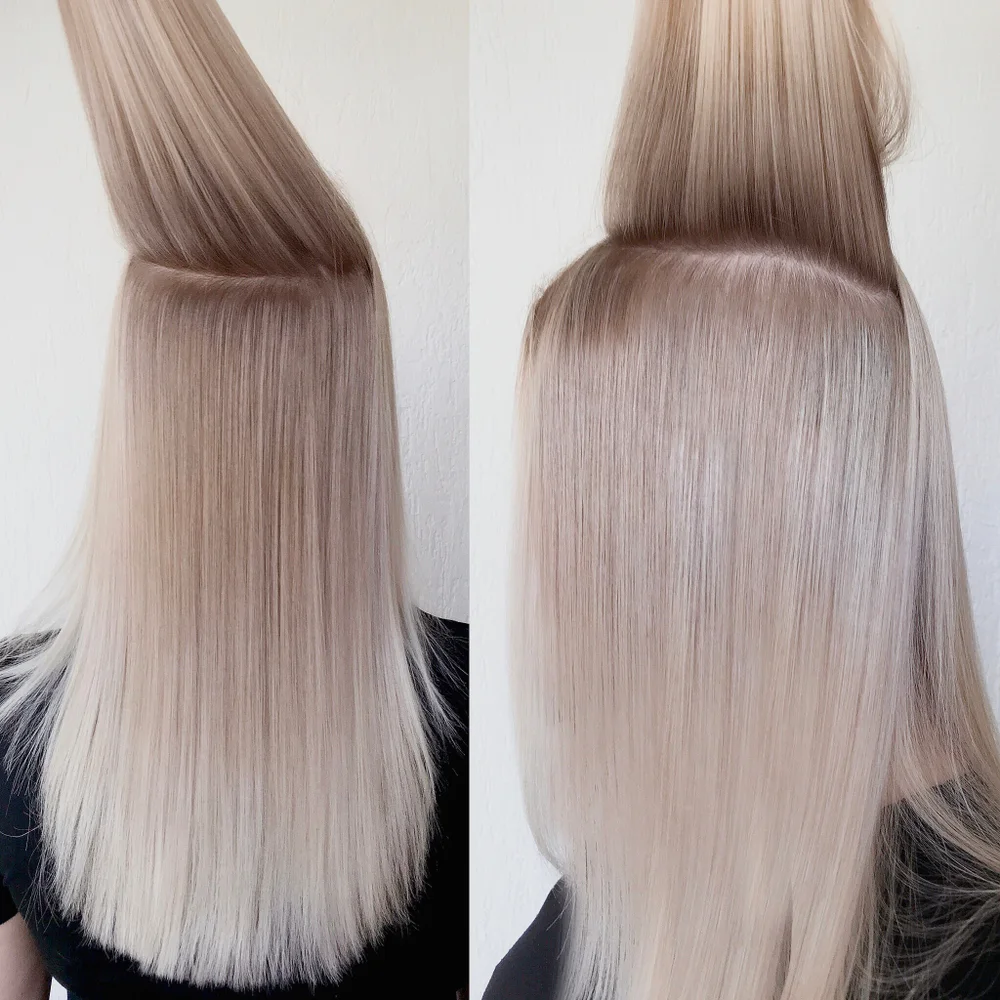
Shumskaya Tatiana/Shutterstock
This example makes it clear how a root smudge doesn’t need to fully penetrate into the deeper layers of the hair – it’s most important to have it blended in through the top layers. A light ash blonde is darker than the all-over platinum ombre but lighter than her natural dark blonde/light brown color.
5. Radiant Red With Deep Auburn Smudged Root

Anna Kraynova/Shutterstock
Root smudging works really well on vibrant red tones that have a hard time blending with naturally brown roots as they grow out. A rich, deep auburn root smudge includes more brown undertones than the vibrant red throughout, making it the perfect shade to transition a medium or dark brown root color in.
6. Champagne Blonde With Light Ash Smudged Root
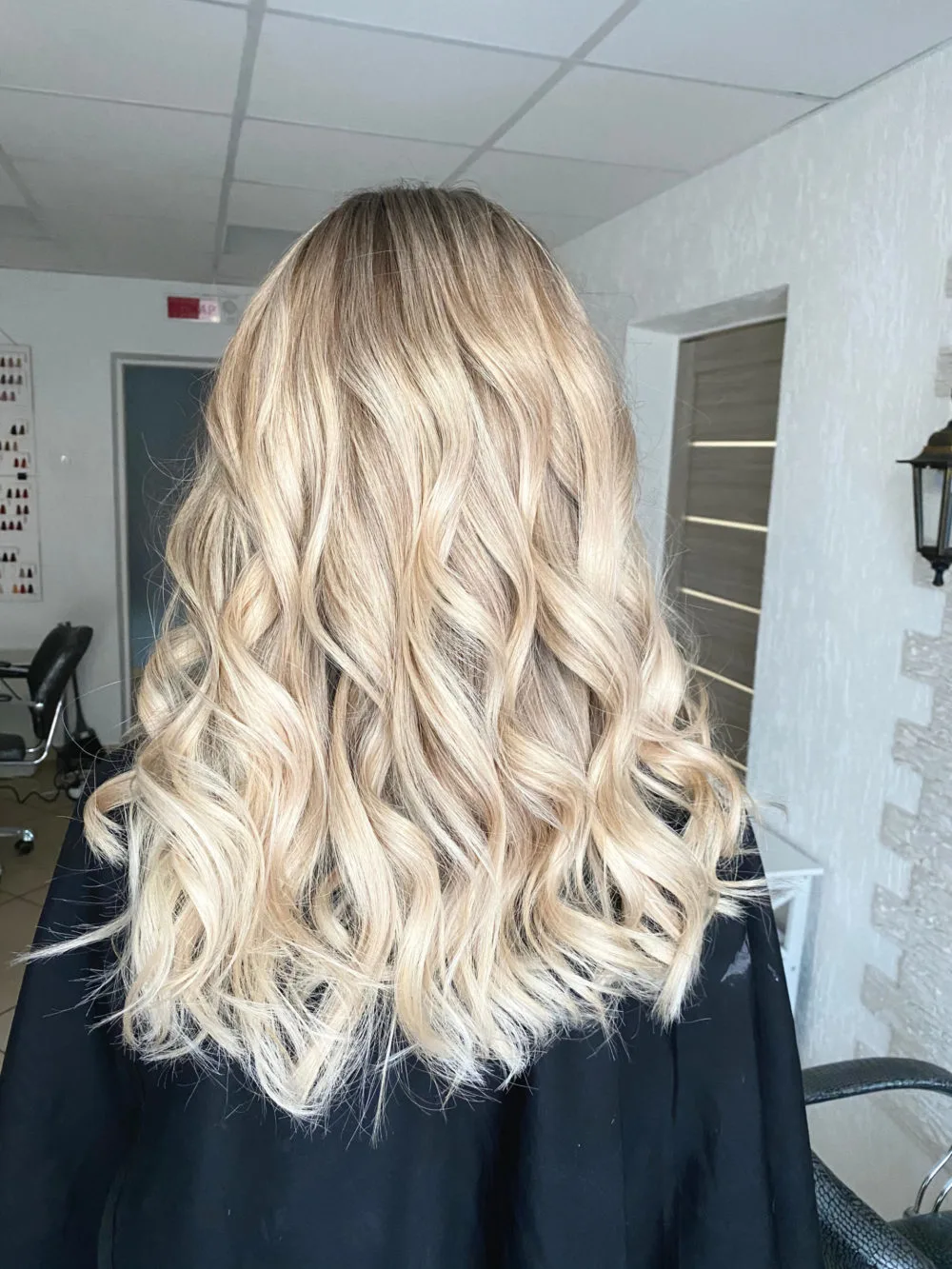
Shumskaya Tatiana/Shutterstock
Choosing ultra-light blonde shades like this bubbly champagne blonde requires a lot less maintenance with a cool-toned root smudge. Here, a light ash brown provides a little depth and transition color to make medium-brown roots less obvious as they grow out.
7. Golden Brown and Honey Blonde Ombre With Chocolate Smudged Root
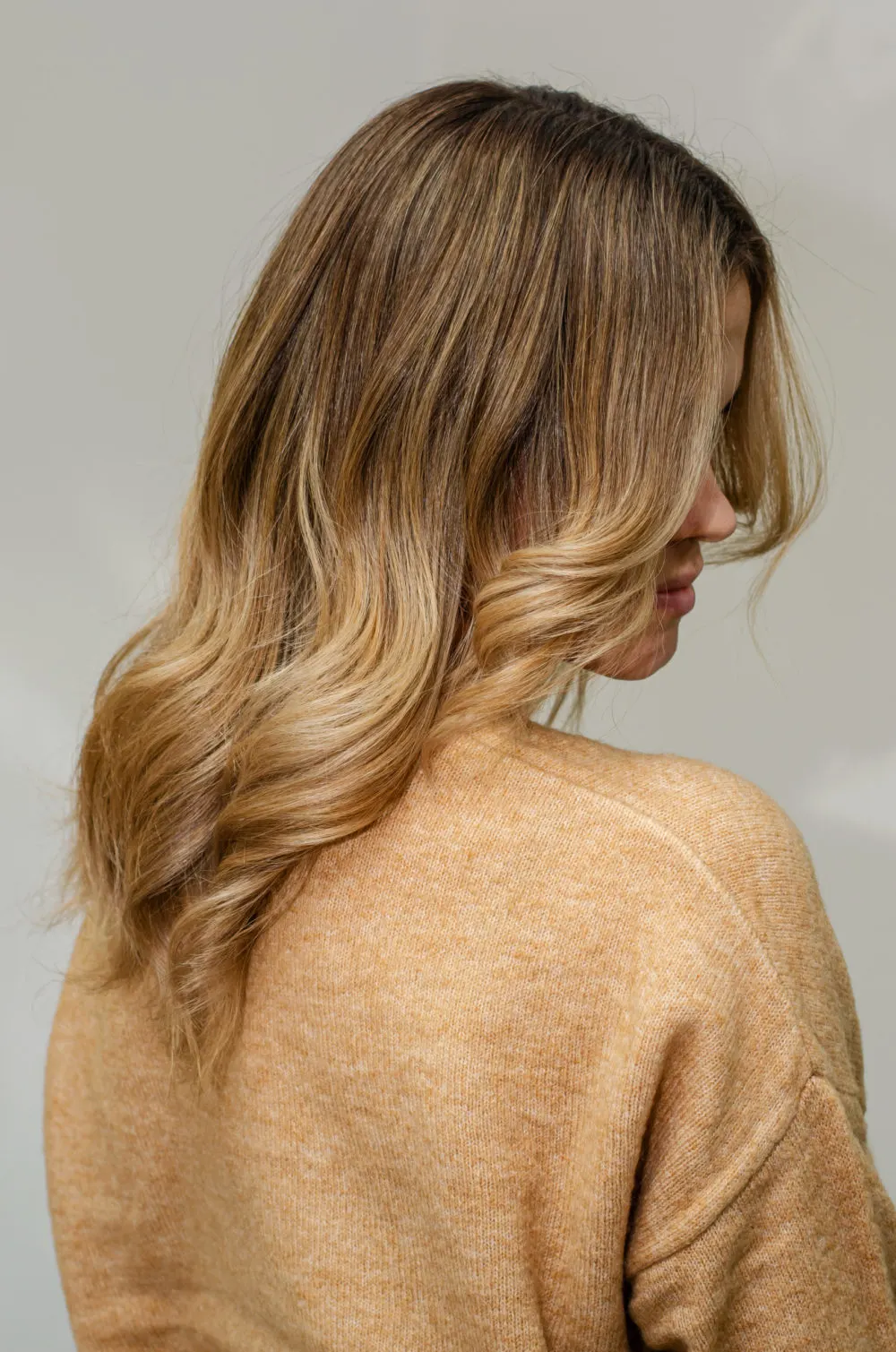
Tetiana Tychynska/Shutterstock
Light golden brown gradually lightens into a rich, warm honey blonde shade in this dimensional ombre look. With her naturally dark brown hair color, a medium chocolate brown root smudge extending about 2 inches off the root creates a softer line of transition and helps blend that lighter golden brown shade in nicely.
8. Raspberry Copper With Medium Brown Root Smudge

Roman Samborskyi/Shutterstock
A medium brown root smudge softens and adds depth to all-over copper color with deeper raspberry tones near the roots. Her roots are likely dark brown, so keeping the smudge color a little lighter helps it blend into the rich, raspberry transition color smoothly without looking grown-out or out of place.
9. Platinum Ash Blonde With Medium Ash Smudged Root
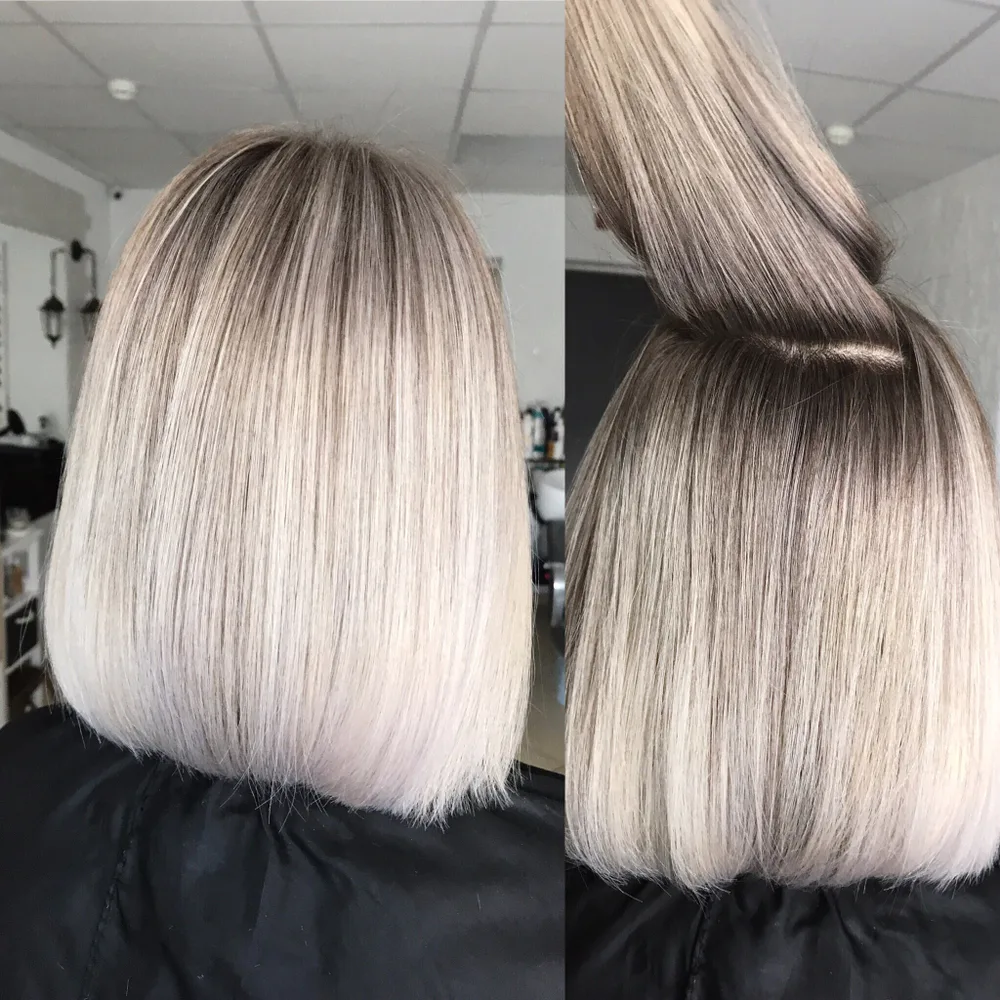
Shumskaya Tatiana/Shutterstock
Silvery ash tones are so popular for cool-toned complexions and bring so much shimmering brightness in an ultra-light platinum blonde shade. A medium ash brown smudged root is the key to blending this bright color out for longer periods between touch-ups and less obvious root growth.
10. Fantasy Colors With Violet Root Smudge

Oleg Gekman/Shutterstock
Smudged roots can even be used to help make fantasy shades better blend with natural roots as they grow out! Her natural hair color may be a medium or dark brown color.
This would clash terribly with the light magenta, aquamarine, and platinum tones here. A rich violet root will camouflage and blend out those natural roots much better to buy a little more time between touch-ups.
Tips and Things to Consider
What else should you know about smudged roots before you ask for this service to your next color appointment? We’ve got a few helpful tips and things for you to consider below.
- Root smudge, root melt, or shadow root? While some mistakenly use these terms interchangeably, remember that they are different and each tweaks the final result a bit. If you want your hair as light all-over as possible, opt for smudged roots. Want an ombre effect with dark, blended roots melting down into the midshaft? Ask for a root melt. Want a stark but well-blended contrast that sits closer to the root? A shadow root is what you want.
- Choose the perfect smudge shade and tone. You need to consider two things when choosing your root smudge color: Your natural color level and shade and the new, lighter color you’re getting. Pick a shade and tone that’s 1-2 levels lighter than your natural color, slightly darker than your new color, and in the same color temperature (warm or cool) as your new color. Example: Warm, medium brown natural color going caramel blonde looks great with a light golden brown root smudge.
- Smudged roots work especially well with all-over color. A root smudge can be a great balayage add-on, but since balayage leaves sections of your natural color intact, it can clash a bit since the smudge shade is 1-2 shades lighter than your natural hue. If you plan to go blonde or lighter in tone all-over, a smudged root is absolutely perfect.
- Don’t rush in for touch-ups. There are 3 basic reasons to opt for a root smudge. First is adding dimension and depth, second is creating a lived-in, natural look, and third is reducing the need for root touch-ups every 6-8 weeks. Don’t rush in for touch-ups like you’re used to! Let your smudged roots work for you a little longer (usually around the 12 week mark).
- Bring inspiration photos to your stylist. It’s hard to accurately describe the look you’re going for without photos to help your stylist visualize it. Bring 2-3 photos of the color and root smudge look you want to ensure your wants are understood. Some stylists may consider a smudged root to be the same thing as a darker shadow root or think you’re asking for a more-extended root melt that blends down further into the midshaft. Clear photos make your choices more apparent and ensure you get the results you want!
Smudging your roots with a lighter color, balayage, or highlight is going to totally transform the way you handle root touch-ups and maintenance. It’s going to add so much natural-looking dimension and shadowy depth close to the root without dimming the brightness of your chosen shade!
Smudged roots are the key to natural-looking, lived-in color that reduces your need for maintenance and touch-ups. Whether your natural color is dark blonde, red, brown, or black, you can make a smudged root work for you.
Remember to choose a shade in between your natural and new color – make sure it matches the warmth or coolness of the new shade – and see how luxe and dimensional your results will be!
